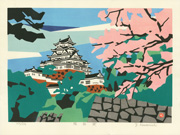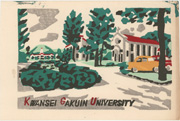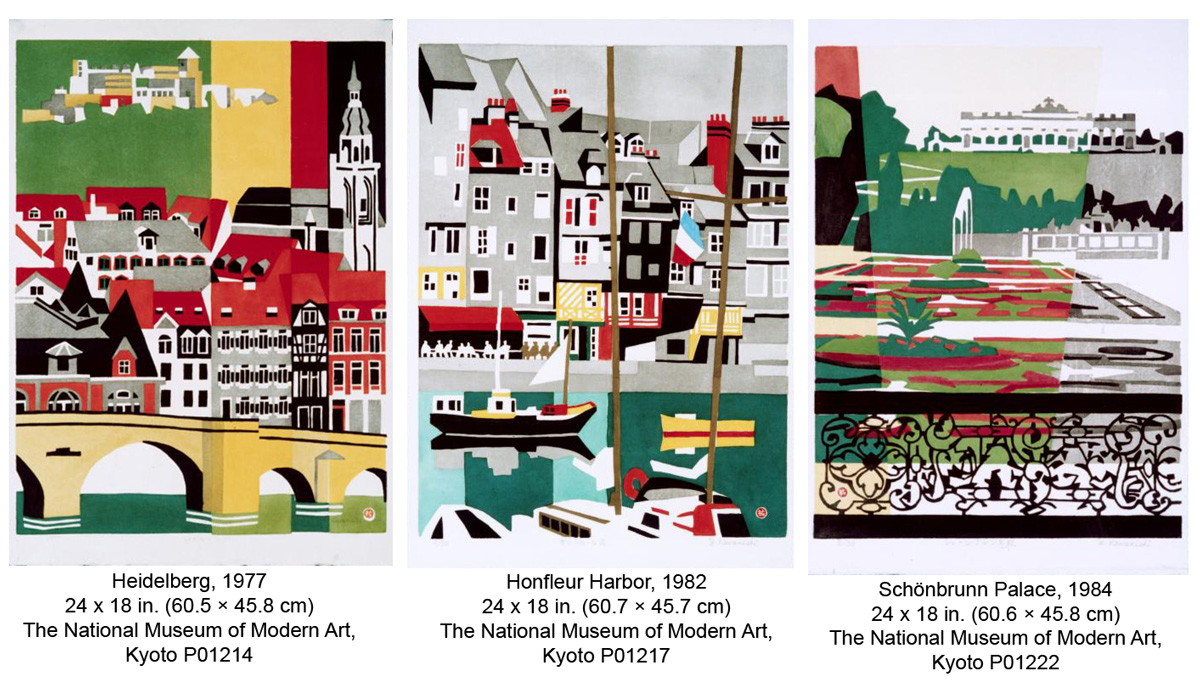Prints in Collection
IHL Cat. #1416
Kwansei Gakuin University, after 1999
IHL Cat. #1103
Biographical Data
Biography
Sources: Kobe City website http://www.city.kobe.lg.jp/culture/culture/institution/museum/tokuten/2010_03kawanishi.html; Guide to Modern Japanese Woodblock Prints: 1900-1975, Helen Merritt, University of Hawaii Press, 1992, p. 61; website of Kwansei Gakuin University https://www.kwansei.ac.jp/news/2013/news_20130731_008089.html and as footnoted.
Kawanishi Yūzaburō 川西祐三郎 (1923-2014) 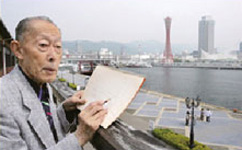 | Following in the footsteps of his father the sosaku hanga printmaker Kawanishi Hide (1894-1965), Yūzaburō started studying woodblock print making with his father when he was eight years old. The third son in the family, he was born in Kobe in the Kansai area in 1923. At the age of nineteen, his skill was such that he exhibited at the 11th Nihon Hanga Kyōkai (Japan Print Association) exhibition, winning a first prize, but it was not until he graduated from Kwansei Gakuin University in 1947, an education that was interrupted by the 1942 wartime Student Mobilization Order., that he became a full-time print maker. After the death of his father in 1965, Yūzaburō was to go on to become a leader in the creative print genre (sosaku hanga) in the Kansai region. |
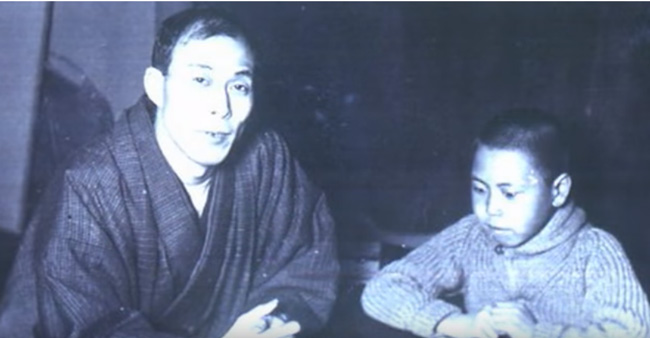
The artist and his father c. early 1930s
Starting to learn printmaking at the age of eight, Yūzaburō never was exposed to oil or traditional Japanese painting
His style is very much like his father's, avoiding the use of a keyblock to outline color areas and using bright colors set in broad color planes. After his time in Europe in the early 1970s, his choice of colors became his own, differentiating his work, along with his choice of subject matter, from his father's. While creating over a thousand prints in his lifetime, he also meticulously cataloged his father's print output of nearly one thousand prints.
Yūzaburō participated in international bienalles, starting in the late 1960s and in the early 1970s traveled extensively in Europe, including visits to France, Italy and Germany, resulting in a number of portfolios and print series depicting European cities.
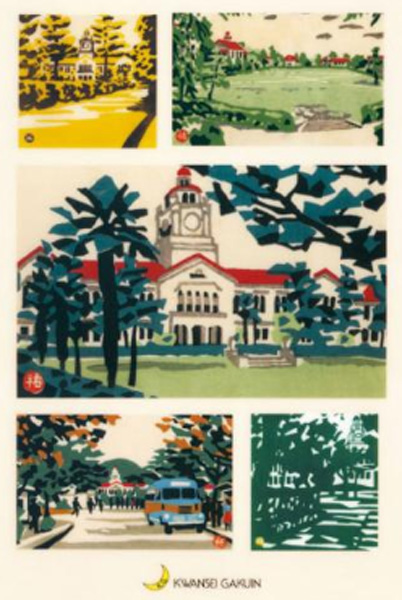 | The artist had a life-long relationship with Kwansei Gakuin University with which he worked collaboratively to design a large number of promotional items, some of which are available through the school's online store.1 The main part of Yūzaburō's output, however, were landscapes and famous places of Japan, such as this collection's print IHL Cat. #1416 Himeji Castle 姫路城, and the 1971 series Eight Views of Osaka (Osaka hakkei). Deeply engaged with the Kobe area, he received the Kobe City Prize of Culture in '85 and the Hyogo Prefecture Prize of Culture in '95. He hosted museum visits in his studio and in 2010 presented the Kobe City Museum with over 900 of his works, 154 of which were exhibited that same year. He was instrumental in bringing his father's collection of works, "The Kawanishi Hide Collection" including prints by Kawanishi Hide himself, Onchi Kōshirō (1891-1955) and Kawakami Sumio, with |
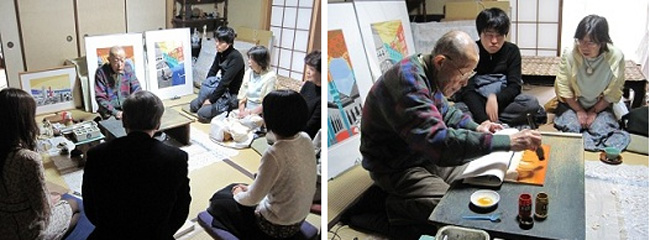
A museum member visit to the artist's atelier in November 2011
Kawanishi Yūzaburō passed away at the age of 90 on December 5, 2014 at a Kobe City hospital.
His work is in the collections of the National Museum of Modern Art in Tokyo, the National Museum of Modern Art in Kyoto, the National Museum of Art, Osaka, and the Honolulu Museum of Art among others.
The artist's "yū" seal 祐, shown below, is the seal most commonly seen on his prints.

2 http://www.momak.go.jp/English/exhibitionArchive/2011/389.html
